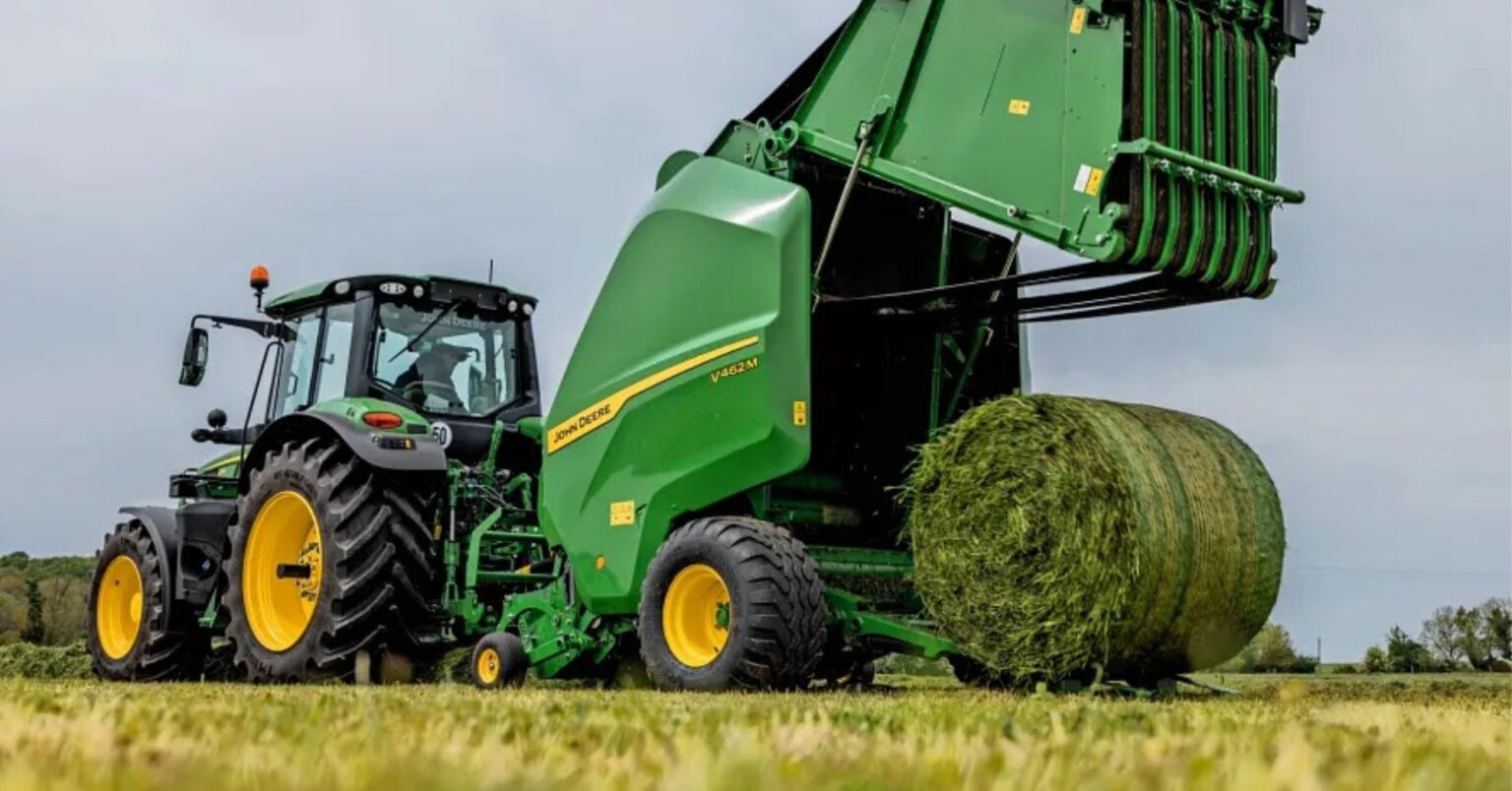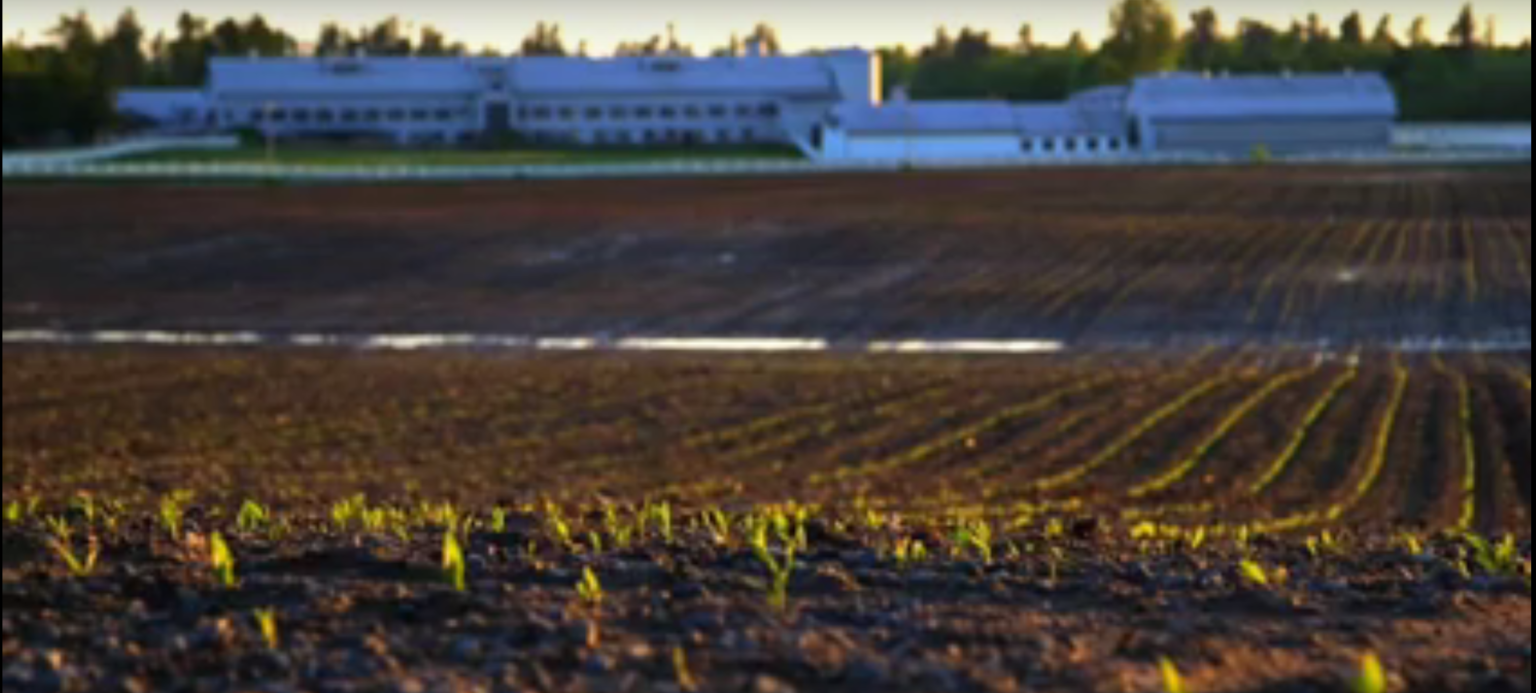Subscribe to Updates
Get the latest agriculture news and updates directly to your inbox.
Author: staff
John Deere has introduced the V452M round baler to its North American lineup, providing enhanced productivity and precision to larger-scale hay and forage operations. The V452M headlines the newly updated lineup of VR and CR round baler models, introducing a new naming convention and advanced features purpose-built for heavy crop and silage conditions, while the current 1 Series round balers remain and continue to serve customers with their baling needs. “The V452M and the broader VR and CR model updates are designed for more density, more productivity and more actionable data,” said Kaylene Ballesteros, John Deere marketing manager. “This update…
A federal appeals court has ruled that President Donald Trump does not have the authority to impose tariffs under the International Emergency Economic Powers Act. While the decision reaffirmed an earlier lower court ruling, the tariffs themselves remain in place for now. The U.S. Court of Appeals for the Federal Circuit sided with the U.S. Court of International Trade, which had previously concluded that the president lacked statutory authority to impose tariffs under IEEPA. The case centered on a series of executive orders issued in early 2025, including so-called “fentanyl tariffs” targeting imports from Canada, Mexico, and China, as well…
By Ryan Hanrahan United States farmer sentiment hit a 12-month low in August as producers expressed less optimism about the future and reported weak financial expectations for their farms in the coming year. It was the third month in a row that the barometer has declined. “Sentiment differed widely among producers depending on whether their farm is primarily a crop operation or a livestock operation,” the Purdue/CME Group Ag Economy Barometer said. “Responses from crop producers this month were much less optimistic than those from livestock producers, which indicates the disparity in profitability between crop and livestock enterprises. Beef cattle…
This fall, country music fans can quite literally “get lost with Lainey.” Farms across North America are celebrating Grammy and CMA Entertainer of the Year Lainey Wilson with corn mazes shaped in her likeness, combining fall fun with a tribute to one of country music’s biggest stars. In Springfield, Tennessee, Honeysuckle Hill Farm has unveiled its 2025 Country Music Corn Maze featuring Wilson tipping her cowgirl hat, surrounded by the words “Nashville Loves Lainey Wilson.” The maze opens September 27 and promises a season of family fun, from wagon rides to pumpkin picking. Wilson herself invited fans out to the…
Ahead of 9 a.m. CT, December corn was down 4½¢ at $4.18½ per bushel. November soybeans were down 5¼¢ at $10.35¾ per bushel. December CBOT wheat was down 1¼¢ at $5.27 per bushel. December KC wheat was up 1½¢ at $5.12¾ per bushel. December Minneapolis wheat was down a penny at $5.73¼. “Corn’s strong price action from late last week carried over [to yesterday], supported in part by crude oil gaining more than $1.50,” said Cole Raisbeck, commodities broker with Kluis Commodity Advisors. “Bulls now have their sights set on the $4.30 gap left from early July. Soybeans, meanwhile, remain…
By Dale Lattz, Gary Schnitkey, Nick Paulson, and Carl Zulauf Machinery cost estimates for 2025 have been released and are available in the Management section on the farmdoc website. Machinery costs are updated every two years, with the last update occurring in 2023. As is usual, estimated machinery costs have increased, with most increases in the 1% to 14% range. The increases from 2023 to 2025 are less than the increases estimated between 2021 and 2023, when many costs increased by as much as 30%. Machinery Cost Estimates for 2025 Estimated machinery costs are often used in setting custom rates where one individual performs…
If you ever thought about making a marketing plan for your farm, it’s time to make it happen. You can do it! Let’s look at how you can make a plan that works best for your farm. Every year, I enjoy teaching all the classes for my Kluis Grain Trading Academy, but I have a favorite: Creating a Marking Plan. This class brings together all the concepts we teach during the previous classes. First, let’s review the basics: Simple is better. Yes, a more complex plan may cover more risks and scenarios. But a simple plan ends up being better,…
What Happened The August World Agriculture Supply and Demand Estimates (WASDE) report indicated a big increase in expectations for the U.S. corn crop and carryout. Yet on the world front, not much change was noted. World stocks-to-usage remain at their lowest level since 2013 when, the low for December corn futures came in late fall at $4.12. As of this writing, December 2025 corn futures are trading near $4.06 with a contract low of $3.92. Given this historical comparison, it’s challenging to believe corn futures could get much lower. The rise of the cost of production in the last 13…
Claas has updated the Lexion 8000 combine lineup with a new model, bump in horsepower, more comfort features, and better visibility. “Just like the producers we serve, we’re focused on continuous improvement,” said Dennis Ogle, head of sales at Claas. “Today’s operator deserves equipment that not only matches the demands of the field, but also offers greater comfort for long hours in the seat.” Higher Horsepower Claas is reshuffling its Lexion line for model year 2026. The 2026 Lexion 8500, available in wheeled and Terra Trac models, rated at the same 506 hp as last year’s Lexion 8600. The 2026…
December corn ended the day up 2¾¢ at $4.23 per bushel. November soybeans closed down 13½¢ at $10.41 per bushel. December CBOT wheat ended the day down 6¢ at $5.28¼ per bushel. December KC wheat closed down 8½¢ at $5.11¼ per bushel. December Minneapolis wheat was down 5¾¢ at $5.74¼. “Corn’s technical breakout, strong demand, and shrinking supply outlook are fueling short covering, with traders eyeing $4.30 resistance and September’s WASDE [World Agricultural Supply and Demand Estimates report] for confirmation,” said the Grain Market Insider newsletter by Stewart-Peterson Inc. “…Soybeans remain under pressure from meal weakness and Chinese demand fears,…


:max_bytes(150000):strip_icc()/Markets-3-Corn-up-3-19bdbeee0041452db8bce0a0f1c8b883.jpeg)
:max_bytes(150000):strip_icc()/36724362670_ae7c5cd98a_o-86f368af04cd40cd89d9d669d850f7cd.jpg)





:max_bytes(150000):strip_icc()/101651819_farm_grain_bin_silo-e479c98f1adb4c99b25ae1603193debb.jpg)

:max_bytes(150000):strip_icc()/Markets-6-Corn-down-13-6079dfe0945d457f88c0730ef35a6f38.jpeg)
:max_bytes(150000):strip_icc()/101485674_corn-5d814390db764fcdaa3d3c1e82604454.jpg)
:max_bytes(150000):strip_icc()/101088351_corn-6e630ca8c4d0405c8494114b107e18bb.jpg)
:max_bytes(150000):strip_icc()/100078307_corn-c6c7f6288f484b3586e4251609d37c5d.jpg)
:max_bytes(150000):strip_icc()/LEXION8600-3f1d8205881040849bff6d35a036cd87.jpg)
:max_bytes(150000):strip_icc()/Markets-9-Corn-down-wheat-down-5-255020c945814214a487a11b89b5066b.jpeg)